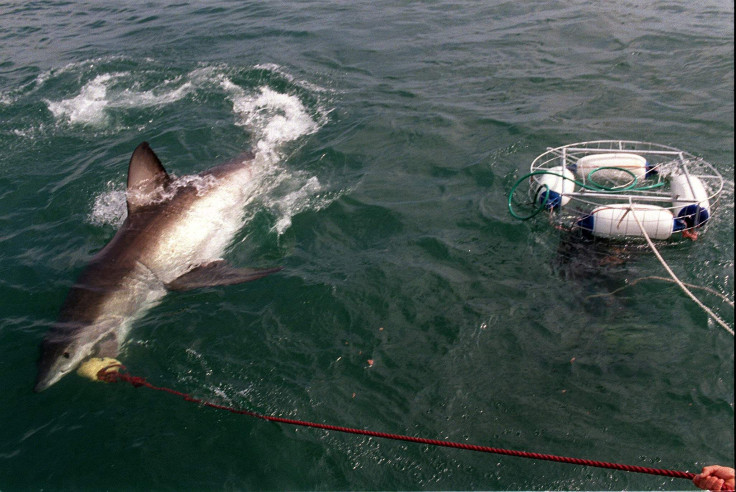Is Megalodon Still Alive? Facts About The Real Shark
This summer will see the release of the shark horror film “The Meg.” Jason Statham may lead the blockbuster, playing a professional deep sea rescue diver, but the actor also has to share the big screen with his large, prehistoric nemesis: a Megalodon shark.
Ahead of the film’s release this week, let’s take a look at some real facts about Megalodon.
Is Megalodon Still Alive?

The Megalodon was once a very real shark, but despite the plot of the film, it is no longer alive. “People ask me [if the megalodon is still alive] every day,” Dana Ehret, an assistant curator at the New Jersey State Museum, recently told Smithsonian Magazine. “The answer is no”
Why Did Megalodon Go Extinct?
The shark species first came to be about 20 million years ago before going extinct roughly 2 million years ago. It is thought to have gone extinct due to oceanic temperature changes, a decline in food sources, and a rise in competitors, though these are just theories.
What Did It Eat?
The shark appears to enjoy going after humans in the film’s trailer, but its actual diet was far less sinister. Megalodon was thought to hunt prehistoric whales and smaller creatures, such as dolphins and seals.
Where Are All The Fossils?

Megalodon was mostly made up of cartilage. Its located remains are most often teeth, which are found all over the world. Smithsonian Magazine explained this, writing:
Sharks are cartilaginous fish—only a minority of their skeletons are calcified. They’re basically big, fleshy ears with fins (and in this light, much less terrifying). Lightweight and springy, a cartilage-based form is conducive to speedy swimming in pursuit of prey. But what’s good for the meg hasn’t been good for shark researchers: Cartilage simply isn’t built to survive the ages, meaning the meg’s left behind a pretty spotty fossil record.
How Big Was It?
The Megalodon was thought to weigh about 50 tons and measure in at up to 60 feet long.
Is Megadolon Related To The Great White Shark?

It was once believed that Megalodon was a “distantly related cousin” of Great Whites, the shark species made famous from the 1975 film “Jaws,” but in recent years, there has been a debate among researchers about their connection.
National Geographic once reported that scientists considered the two species to have “similar” looks. A more recent report from National History Museum debunks their relation, stating Megalodon is “from a different lineage of shark of which megalodon was the last member.”
“The Meg” releases in theaters Aug. 10.
© Copyright IBTimes 2025. All rights reserved.






















